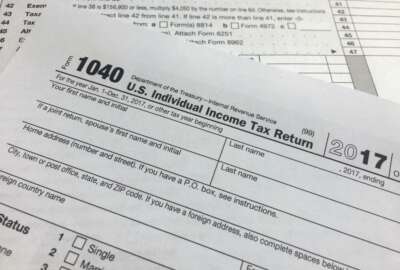

Now that the agency defends itself against more than a billion cyber attacks a year, Commissioner Chuck Rettig urged members of the Senate Finance Committee We...
The IRS has kept no secrets from Congress about the antiquity of its IT systems, but now that the agency defends itself against more than a billion cyber attacks a year, Commissioner Chuck Rettig urged members of the Senate Finance Committee Wednesday for multi-year funds to modernize its hardware as well as the workforce.
Under its six-year Integrated Modernization Business Plan, which will cost up to $2.7 billion, the agency plans to refresh its legacy IT systems and modernize computer code that dates back to the Kennedy administration. For FY 2020, the IRS has requested $290 million for the IT modernization fund.
“It’s difficult to continually patch. At some point, we need to replace, and we’re definitely at that point,” Rettig said. “The IRS is as well-posed as it’s ever been to be able to modernize both the infrastructure as well as the [programming] language, so we’re moving forward with the ability to be agile [and] flexible as newer technologies come along.”
Rettig’s predecessors have made similar pleas to Congress about the state of the IRS’s legacy IT. However, he said the IRS has been “tasked with a lot of new projects almost on an annual basis,” which has increased the urgency for modernization.
“Essentially, they add one project on top of an existing project, and at some point, the entire system needs to be brought about and replaced,” he said.
Treasury Secretary Steve Mnuchin stressed the importance of Congress providing a steady level of multi-year funding for IT modernization at a House Appropriations subcommittee on Tuesday.
Sen. James Lankford (R-Okla.) expressed concerns about finding new IT talent familiar with the programming languages that some IRS systems run on.
“It has to be progressively harder and harder to be able to get IT folks to be able to work on software that’s 40 years old,” Lankford said.
Recruiting a future generation of its workforce stands out as one of the IRS’s top priorities. About 45 percent of the IRS’s total workforce will be eligible to retire within the next two years, according to Rettig, and less than 3 percent of its workforce is age 30 or younger.
Rettig said the agency “essentially lost an entire generation of IRS employees” through a hiring freeze that extended from 2011 through 2018. The Treasury Inspector General for Tax Administration, in a November 2012 report, claimed the agency “has not conducted significant wave hiring since FY 2009.”
Rettig also renewed his push for critical pay authority, which would allow the agency to hire up to 40 short-term IT and cybersecurity personnel within six-to-eight weeks, as opposed to the six-to-eight months hiring process that most agency employees encounter. The new hires would also receive pay beyond what the General Schedule system allows for career employees.
New hires made under this critical pay authority would play a major role in securing the agency against the 1.4 billion cyber attacks it faces every year, many of which Rettig described as “sophisticated attacks” from nation-state actors.



Sen. Ben Cardin (D-Md.), who held a town hall with IRS employees alongside Sen. Ron Wyden (D-Ore.) and Rettig on Monday, noted a “long trend of not providing adequate resources to the IRS, and that has had an impact on the workforce’s ability to carry out their mission.”
The 35-day partial government shutdown, he added, discouraged prospective hires from applying and convinced some employees from quitting or retiring.
The IRS also saw extended call wait times following the shutdown. National Taxpayer Advocate Nina Olson found accounts management, the primary point of contact for taxpayer questions, answered less than half of its incoming calls the first week after the shutdown, and the average wait time clocked in at 17 minutes.
By comparison, the agency answered 86 percent of calls routed to accounts management in the first week of last year’s filing season, and the average wait time was only four minutes.
Workforce attrition has also led to the IRS closing the doors on 38 of its 358 taxpayer assistance centers across the country. As a result, the agency now requires taxpayers to schedule appointments instead of seeking walk-in help.
More than half of taxpayers who call to set up an appointment, Rettig said, have had their tax questions answered over the phone, or been redirected elsewhere in the agency to resolve their problem.
As part of its IT modernization plan, the IRS is running a callback pilot on one of its 97 phone lines.
Senate Finance Committee Chairman Chuck Grassley (R-Iowa) said the current tax season has stood out as “the most scrutinized I can remember,” but given changes under the Tax Cuts and Jobs Act, he added that “in some ways that’s understandable.”
The IRS has received more than 84 million individual tax returns since March 22 and issued more than $191 billion through 65 million tax returns. The agency received 1.9 million tax returns on Jan. 28, the first day of the filing season — or more than 500 returns per second.
Copyright © 2024 Federal News Network. All rights reserved. This website is not intended for users located within the European Economic Area.
Jory Heckman is a reporter at Federal News Network covering U.S. Postal Service, IRS, big data and technology issues.
Follow @jheckmanWFED
